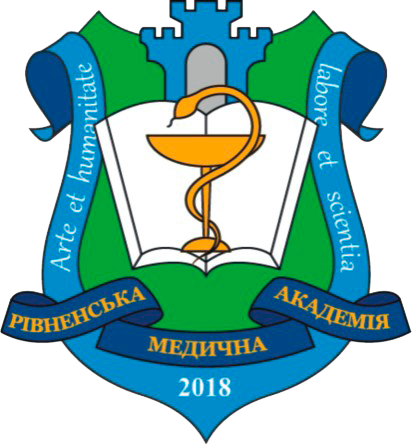MAIN ASPECTS OF QUALITY CONTROL OF HOMEOPATHIC MEDICINES IN UKRAINE
DOI:
https://doi.org/10.32782/health-2024.1.12Keywords:
quality control, identification, homeopathic pharmacy, medicines, good manufacturing practiceAbstract
Today, according to the World Health Organization, adverse drug reactions are the fifth leading cause of death worldwide. Natural methods of treatment (for example, phytotherapy) have significantly fewer contraindications, but even they have their limitations. Priority is given to natural products, among which herbal and homeopathic medicines play an important role. Homeopathic medicines have been used effectively for decades all over the world. Despite the significant achievements of modern organic chemistry and the production of high-quality synthetic biologically active substances, the popularity of homeopathic medicines is constantly growing, both in Ukraine and abroad. With the worldwide increase in the use of homeopathic medicines by the population and the rapid expansion of the world market, the safety and quality of homeopathic medicines have become an urgent issue for health authorities, the pharmaceutical industry and consumers. The production of homeopathic medicines is carried out in accordance with the rules of good manufacturing practice. The safety of homeopathic medicines mainly depends on their quality. Since the quality requirements of homeopathic medicines correspond to the general pharmacopoeial requirements for dosage forms, their production and quality control must be carried out in compliance with all the rules of good manufacturing practice, and quality control methods must be developed for each product, validated and included in the company's regulatory documentation. Requirements for quality control of homeopathic medicines also depend on the content of active pharmaceutical ingredients in them, and quality control of the finished homeopathic medicine must be carried out both for the final product and for the initial, intermediate materials. Therefore, in order to organize the production of high-quality and safe homeopathic medicines, it is important to carry out in-depth research of raw materials and basic homeopathic medicines.
References
Colalto C. Safety assessment of homeopathic medicines. Journal of Applied Toxicology. 2020. Vol. 40. № 11. P. 1454–1466.
Wrześniewska-Wal I. Traditional and academic medicine – around the WHO strategy. Journal of Education, Health and Sport. 2022. Vol. 12. № 11. P. 198–205.
Мощич О.П., Крамарев С.О. Міжнародний досвід застосування гомеопатичних лікарських засобів із позиції доказової медицини. Український гомеопатичний щорічник. 2020. Т. XVII. С. 102–114.
Державний реєстр лікарських засобів України. Державний реєстр лікарських засобів України. URL: http://www.drlz.com.ua/ (дата звернення: 07.12.2023).
Про лікарські засоби : Закон України від 28.07.2022 № 2469-IX, станом на 17 вересня 2023 р. URL: https://zakon.rada.gov.ua/laws/show/2469-20#Text (дата звернення: 16.12.2023).
Державна Фармакопея України : у 3-х т. / ДП “Український науковий фармакопейний центр якості лікарських засобів”. 2-е вид. Харків : Український науковий фармакопейний центр якості лікарських засобів, 2014. Т. 3. 732 с.
The modern state and historical aspects of homeopathy as a scientific and educational discipline in Ukraine / O.O. Gaidukova et al. Journal of Global Pharma Technology. 2020. № 12(09). Р. 204–215.
Вишневська Л.І., Сергєєва О.Ю., Олійник С.В. Гомеопатична фармація і медицина. Глосарій термінів та визначень : навчальний посібник / ред. Л.І. Вишневська. Харків : Оригінал, 2017. 340 с.
Гуцол Л.П., Гуцол К.М., Цимбал І.П. Доказова база класичної гомеопатії: джерела, сьогодення, перспективи. Фітотерапія. Часопис. 2019. № 1. С. 31–34.
Rutten L. Prognostic factor research in homeopathy. Indian j Res Homoeopathy. 2016. № 10. Р. 59–65.
Bokov D.O., Samylina I.A. Homeopathic remedies of snowdrops: Key aspects for standardization procedures. Pharmaceutical sciences. 2015. № 2. Р. 184–186.
Physicochemical investigations of homeopathic preparations: A systematic review and bibliometric analysis-Part 1 / S.D. Klein et al. J Altern Complement Med. 2018. № 24(5). Р. 409–421.
Hernández Berrones J. Breaking the boundaries of professional regulation: medical licensing, foreign influence, and the consolidation of homeopathy in Mexico. História, Ciências, Saúde-Manguinhos. 2019. Vol. 26. № 4. Р. 1243–1262.
Teixeira M.Z. “Similia Similibus Curentur”: The scientific grounding of the homeopathic therapeutic principle through the systematic study of the rebound effect of modern drugs. Clinics. 2022. Vol. 77. 100091.
Treatment of allergic rhinitis: A review of homeopathic therapy / T. Yarnykh et al. Journal of Advanced Pharmacy Education & Research. 2023. Vol. 13. Issue 2. Р. 107–117.
European Directorate for the Quality of Medicines & HealthCare. Guide for the elaboration of monographs on homoeopathic preparations. Edition 2022. Council of Europe, 2022. 34 p.





